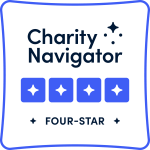All State Policies: Wisconsin
Who’s Responsible?
Below are short descriptions of relevant state agencies/departments by policy topic, followed by more information on specific policies.
Drinking Water: Wisconsin Department of Natural Resources’ (DNR) Drinking Water and Groundwater Program “manages activities that affect the safety, quality and availability of drinking water to protect public health and our water resources.” Wisconsin Administrative Codes that relate to private and public drinking water can be accessed here. The Wisconsin Natural Resources Board sets policy for the DNR and exercises authority and responsibility in accordance with state laws. According to the Department of Health Services, 40% of Wisconsin residents get their drinking water from private wells, with the rest accessing drinking water from public water systems. The Wisconsin Public Service Commission (PSC) oversees more than 575 drinking water utilities in the state. The PSC’s Division of Water Utility and Regulation and Analysis establishes water rates and service standards, reviews construction projects and utility organizational and financial transactions, investigate complaints, promotes effectiveness and viability of utilities, and manages information, records, and data.
Water Funding: Wisconsin’s Clean Water Fund Program (CWFP) and Safe Drinking Water Loan Program (SDWLP) are administered by the Wisconsin Department of Natural Resources. The state details some of the program’s requirements and structure in state statute and administrative codes and also makes more frequent changes to the programs through Intended Use Plans.
Policies
Drinking Water
Senate Bill 48
02/21/2018
Added a statute related to financial assistance for “lead-containing customer-side water service lines”, enabling a water public utility to provide financial assistance to the owner of a property to assist in replacing the customer-side of lead service lines. Under the bill, “if a water public utility provides financial assistance for replacing service lines containing lead, the Public Service Commission must include the cost of providing that financial assistance in its determination of water rates.”
Environmental Justice
Healthy Rivers
Open Water Data
Water Funding
Wisconsin’s SRF Disadvantaged Community Definition & Scoring Criteria
11/01/2023
“Disadvantaged Community” Definition and Tiered Principal Forgiveness Eligibility
Wisconsin’s “disadvantaged community” definition and the project prioritization process is outlined partially in state code and partially through the most recently published Intended Use Plans (IUPs). The Clean Water Fund Program (CWFP) and Safe Drinking Water Loan Program (SDWLP) implementation details are established in the governing statutes and administrative codes: ss. 281.58, 281.59, and 281.61, Wis. Stats., and chs. NR 162 and 166, Wis. Adm. Code. The disadvantaged communities, affordability criteria, and principal forgiveness allocation methodology is outlined on WI DNR’s website and specified within annual IUPs.
The data that Wisconsin uses to identify disadvantaged communities is quite robust compared to other states. They include: 1) population size, 2) median household income, 3) 200% family poverty percentage, 4) population trends, 5) county unemployment rate, and 6) lowest quintile household income upper limit. Each DAC criteria is awarded points based on clearly outlined parameters and are then totaled to score the percentage of principal forgiveness the project may qualify for.
The range for possible principal forgiveness ranges from 0-65%, with the potential for an additional 10% principal forgiveness based on additional factors, but no municipality can receive more than 70% of total project costs as principal forgiveness.
Caps on Principal Forgiveness
Wisconsin implements caps on how much principal forgiveness an SRF applicant can receive. In State Fiscal Year 2025, Clean Water projects were capped at $2,100,000, while Drinking Water projects were capped at $1,600,000. This does hamper the ability of larger systems/municipalities to access principal forgiveness at the same percentage as systems with lower total project costs.
More information can be found on WI DNR’s website
Wisconsin 2023 Assembly Bill 222
4/4/2024 (Signed)
This law requires the Division of Emergency Management to create and administer a pre-disaster flood resilience grant program. Implementation grants awarded are meant to support hydraulic restoration projects that advance nature based solutions.




